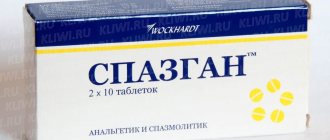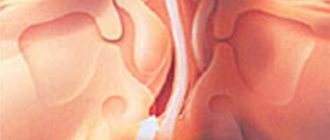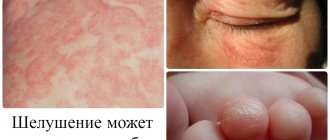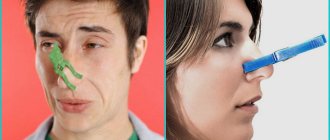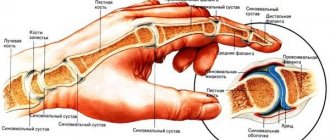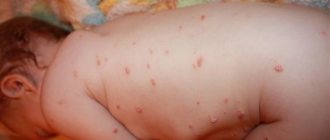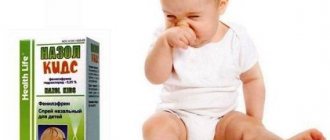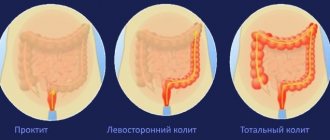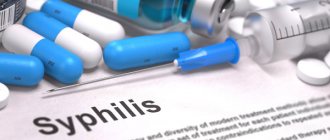Reasons for rising temperature
High temperature is always a consequence of serious processes in the body. Moreover, when it is accompanied by painful sensations in the gastrointestinal tract and throat. These are alarming symptoms indicating some kind of pathology. In this state, a person experiences unpleasant sensations - weakness, weakness, apathy, lack of appetite, poor sleep, general malaise.
What to do if the temperature is 39? First of all, it is necessary to find out the causes of the pathology. Most often they can be like this:
- Infectious diseases.
- Extensive inflammatory purulent processes.
- Poisoning with any chemicals, for example, drugs.
- Disorder of the body's endocrine system.
- Collagenosis.
There may be other reasons that cause such a high increase in body temperature. Particularly when a small child is teething. In an adult, this condition may be accompanied, for example, by toothache, which just indicates a strong inflammatory process.
High temperature in an adult
An increase in body temperature indicates that the body is resisting infection. Since pathogenic bacteria cannot withstand high temperatures, some of them die even if the environment changes by just a few degrees. Like all living beings, a person has an optimal mode in which his body can fight disease. However, a temperature of 42 degrees is the limit beyond which in most cases death will follow.
There is a thermoregulation center in the brain. The signal to increase body temperature is given by substances - prostaglandins, which are synthesized by the body itself when an inflammatory process occurs. After such a signal has been received, the thermoregulation center of the brain gives a “command”. The body reacts and uses all its reserves to increase body temperature and maintain it until the inflammatory process is eliminated. After which the blood biochemistry is normalized, and the thermoregulation center sends a signal that the body should return to the normal temperature regime of 36.6 degrees.
Currants as a remedy for fever
For colds, black currant tea helps relieve fever. Its berries contain a large amount of ascorbic acid, which helps strengthen overall immunity. Currants are characterized by a pronounced diaphoretic and diuretic effect, thanks to which a drink from it not only helps to lower the temperature, but also accelerates the removal of toxins from the body. For 1 tsp. Grind berries with sugar, take 200 ml of boiling water, leave for 20-25 minutes and drink warm.
What diseases can cause fever?
Most often, if the temperature is 39 and cold, then these may be symptoms of a cold and flu. However, these diseases themselves are not always the cause, but their complications are pneumonia, otitis media, rhinitis, tonsillitis, pharyngitis, bronchitis, and sinusitis. Meningitis belongs to the group of colds, but infection may not occur as a result of hypothermia. Sometimes this infection is transmitted, for example, through poorly treated drinking water.
Another group is genitourinary diseases. Acute pyelonephritis, for example, always causes a very high temperature. This may also be an exacerbation of chronic processes, such as prostatitis or inflammation of the ovaries.
Diseases of the gastrointestinal tract are also accompanied by a significant increase in temperature. Moreover, these are not only infections, such as dysentery, salmonellosis, rotavirus and others. Acute processes of chronic diseases of the liver and pancreas often give rise to high fever. Not to mention banal poisoning from poor-quality food or overeating. Appendicitis is especially dangerous.
It is necessary to pay attention to the fact that high temperature can be caused by inflammation of the joints, arthritis, radiculitis, gum disease, furunculosis and other pathologies.
Therefore, symptoms other than fever are very important to determine the cause and should be paid serious attention to.
Which form of medication to choose
What to give a child with a fever - tablets, syrup, suppositories? It should be borne in mind that drugs in the form of a solution or syrup begin to act within twenty or thirty minutes after administration, and in suppositories - after thirty to forty-five minutes. At the same time, the effect of using candles is longer lasting. This is confirmed by reviews from parents.
Judging by the reviews of parents, suppositories help out in cases where the child refuses to take the medicine or vomits. It is better to use this form of drugs after bowel movements. It is convenient to administer suppositories at night. You can give fever pills to your child, but this form of antipyretic is rarely used. Tablets are not very convenient to use.
What are the symptoms accompanied by fever
The main symptoms are familiar to most people. These are, first of all, various painful sensations - in the throat or abdominal area, in joints and muscles, head, lower back. When determining pathology, you need to focus on pain first of all. It should be noted that you cannot diagnose yourself, especially when a person is experiencing pain. Only a doctor can accurately determine the disease. You can waste precious time self-medicating, and at best, the acute process will turn into chronic. In the worst situation, there will be a mortal threat.
Elevated temperature, in addition to pain, is also accompanied by other symptoms - nausea, diarrhea, vomiting, this indicates a pathology of the gastrointestinal tract. Cough, runny nose, difficulty breathing - colds and flu. Problems with urination - renal pathology, prostatitis.
Typically, a high temperature is accompanied by chills and a feverish state, which sometimes increases and decreases. Sometimes even confusion occurs. Therefore, a person at such a moment cannot be alone, unattended.
You need to know that a temperature of 39 degrees and above can last for several days in a row, but the body’s strength is not limitless. Therefore, you should not hope that everything will “go away on its own” and the temperature will drop. It is better to call a doctor who will perform a professional examination of the patient, determine the cause of the disease, and prescribe treatment.
What to do if the temperature does not go down
If you have done all the traditional medicine procedures that you yourself knew and that were suggested by friends, drank antipyretic pills, powders and teas, but the temperature has remained at 38 degrees for 2-3 days, you should definitely consult a doctor. The doctor will take into account all the reasons that caused this state of the body, expertly diagnose the disease and prescribe the necessary treatment.
Temperature 39 without symptoms
Sometimes a high fever may not be accompanied by any symptoms. The cause of such a fever may be simple fatigue, severe stress, or physical overload.
The development of collagenosis begins almost asymptomatically. This condition produces high fever, sweating and chills. Only after some time does pain appear in the joints and muscles, and changes in the skin on the face begin.
Rheumatoid arthritis also causes a strong increase in temperature, and at first does not manifest itself with other symptoms that accompany this disease. Also, without any obvious manifestations, thyrotoxicosis begins, in which the amount of hormones in the thyroid gland sharply increases. A little later, symptoms appear - tachycardia.
An overdose of some medications is also accompanied by an increase in temperature without showing any other signs at first. A few days later a rash appears on the skin.
Violation of temperature when taking medications
Some medications can cause a side effect in the form of a sharp increase in temperature above 37 degrees, as a result of which disturbances can be observed several days after the patient takes the medicine.
A few days later, for seemingly unknown reasons, increased temperature, pain and aches may appear after the patient has taken:
- Antibiotics in the form of Tetracycline, Penicillin, Cephalosporin, Isoniazid;
- Anti-inflammatory drugs in the form of Tolmetin or Ibuprofen;
- Iodine preparations;
- Antihistamines;
- Cardiovascular medications in the form of Alpha Methyldopa or Quinidine.
In some patients, despite conducting a thorough examination and research, doctors cannot accurately determine the cause of the increase in temperature and determine the diagnosis. Moreover, the percentage of such people with fever of unknown origin is quite high.
Very often, a few days after visiting a doctor, the pain and aches completely disappear and the patient unexpectedly recovers. The febrile state rarely recurs. If the temperature again rises above 37 degrees, it is necessary to do a full diagnostic study, as a result of which the true cause of this condition is determined.
Elena Malysheva will speak competently about temperature and ways to combat it in the video in this article.
(Visited 3,947 times, 1 visits today)
Source: orvimed.ru
High temperature in a child
Children, especially in the first years of life, tolerate increased temperature much worse than adolescents. How dangerous is a high temperature in a child? The heart rate increases, breathing quickens, becomes heavy and intermittent. A headache appears, loss of appetite, and weakness are observed. In general, the entire body is included in the process and works in an enhanced mode.
In newborn babies, thermoregulation is imperfect. Therefore, an increase in temperature is often not a consequence of an infection in the body or any inflammatory process.
The body of a child under three years old gives off more heat to the external environment than it perceives. Therefore, hypothermia at this age can often lead to the development of a cold.
At the same time, temperatures up to 38 degrees are not dangerous for small children. On the contrary, it indicates that the child’s body is actively fighting the disease. Temperatures up to 39 degrees are usually unpleasant for the baby, but this is how the infection can be significantly reduced. When the thermometer readings exceed thirty-nine degrees, the situation becomes dangerous because it can cause complications, since the load on the cardiovascular system is too great. This pathological condition may be accompanied by seizures.
Therefore, parents need to carefully monitor the situation. Try not to reduce the temperature with medications if it does not exceed 39 degrees. Just make the child’s condition as easy as possible so that he can endure this period safely. Dress him in cotton clothes, remove all external irritants - turn off the TV, computer, excess light. Provide a calm environment and warm drinks.
It must be remembered that viruses easily adapt to antibiotics, and the only thing that can safely cope with them is the child’s own immunity.
Doctors especially note that an increase in temperature indicates that the child’s overall body is healthy. You need to worry when an infectious disease occurs without a high temperature.
There are some contraindications - children under three months of age are at risk of having a fever. Therefore, if the increase in temperature is accompanied by fever, then measures should be taken immediately.
Temperatures above thirty-eight degrees will be dangerous for children who already have chronic neurological diseases or cardiovascular diseases.
What to do if you have seizures
What to give to a child with a fever if convulsions begin? You definitely need to call an ambulance. It is not the high temperature itself that causes convulsions, but a sharp increase in readings. This condition is relatively rare (occurs in 4% of children), but causes overwhelming fear in parents. Measures to prevent febrile seizures are usually taken too late, when the seizure threshold has already been passed. Children under five years of age are prone to this symptom.
First aid for seizures is as follows. It is necessary to turn the child on his side so that he does not choke on saliva. There should be no sharp or hard objects near the head that could cause injury during an attack. A clean and durable, but not sharp, object should be placed between the child’s teeth. A leather glove or wallet will do, but not a finger. This is necessary so that during an attack the baby does not bite his tongue. The convulsions last for several minutes. Afterwards, you should not give food or drink to the child for another hour, because he may choke due to extreme drowsiness.
Antipyretics
When the situation develops too actively and the temperature exceeds the limit of thirty-nine degrees, it is time to take action. What to do if the temperature is 39? First of all, you need to call a doctor. While you wait for him to arrive, you can take medications.
How to bring down a temperature of 39 at home? All pharmacies now offer a wide range of special antipyretics. These are non-steroidal anti-inflammatory drugs. They are sold without a prescription.
Should I lower the temperature or not?
There is no need to rush to lower the temperature. First of all, the patient must be examined by a doctor. You should follow the doctor’s recommendations: if he advises you to lower your temperature, then you should lower it. The doctor makes decisions based on the general picture of the disease and assessment of the patient’s condition, that is, recommendations are always individual.
However, if the patient has a severe fever and the temperature is high (39°C or higher), then he can be given an antipyretic drug, strictly following the instructions on the package. At the same time, you need to understand that you are fighting a symptom, not a disease.
The correct course of treatment involves identifying the cause of the high temperature and carrying out a set of measures aimed at treating the disease that caused its increase.
What to do at a temperature of 38 °C, if the febrile state is very difficult to tolerate? In such a situation, along with mandatory consultation with a doctor, it is necessary to take adequate self-help measures.
If the temperature has risen to 38 °C, the patient must first be put to bed, having first put on loose, non-restrictive clothing made from natural materials. Experts do not recommend using antipyretics from the first day, as they will only bring temporary relief and, by interfering with the natural way to fight the infection, can prolong the period of the disease.
It will be easier to bring down the temperature to 38 °C at home if you create an optimal temperature regime in the room (18–20 °C and 50–60% humidity). Both children and adults require plenty of warm drinks (juices, fruit drinks, herbal teas and decoctions) to increase sweating, replenish fluid loss and cleanse the body of toxic substances.
Drug treatment of adults and children at a temperature of 38 °C (if the doctor considers it necessary) should first of all be aimed not only at eliminating the symptom, but also at combating the cause that caused its occurrence. Today, a drug that has a complex antipyretic and analgesic effect is paracetamol, as well as products containing it as an active substance.
Medications
Paracetamol is one of the most common and effective antipyretic drugs for high temperatures. Its action is to reduce the production of prostaglandins in the body. Thus, paracetamol does not eliminate the cause of the disease, it only fights the symptoms.
“Analgin” is the most powerful remedy against fever; emergency doctors also use it to reduce excessive thermometer readings.
Aspirin or acetylsalicylic acid help to reduce the temperature well if the cause of its appearance is an infection. A very effective and reliable remedy that has been known to mankind for more than a hundred years. However, people with chronic gastrointestinal diseases should take this drug with caution so as not to provoke exacerbations. Therefore, in order not to irritate the stomach, you need to take aspirin tablets in a water-soluble form. It is better for pregnant and nursing mothers to replace this drug with another, safer one. It is also better for women during the menstrual and postpartum periods not to take aspirin, as it thins the blood and can cause bleeding.
Ibuprofen is the safest antipyretic for high temperatures. It is successfully prescribed to children, side effects are minimal, and there are practically no contraindications.
Linden blossom as a remedy for fever
A wonderful aromatic antipyretic tea can be prepared from dry linden blossom. To prepare it, you need to take a handful of flowers and pour 500 ml of boiling water over them. It is better to let the drink sit for 20-30 minutes, after which it should be cooled and carefully strained through clean gauze folded in 2-4 layers. For taste, you can add a tablespoon of linden honey. An infusion of linden blossom helps to quickly reduce the temperature, as it has a pronounced diaphoretic property. Linden tea is also characterized by anti-inflammatory, expectorant and antimicrobial effects.
Herb tea
What to do if the temperature is 39? Warm drink is recommended. Various herbal teas are perfect for this. Well-chosen herbs will help support the immune system, remove toxins from the body, relieve symptoms - sore throat or stomach pain, relieve nausea, reduce headaches. And further reduce body temperature.
One of the most effective remedies in the fight against colds is raspberry tea. You can use both jam and dried berries. Even leaves will do. This drink is brewed by adding raspberries to regular black tea.
Linden tea, mint tea, with the addition of black currant leaves and chamomile flowers are perfect. You can brew these herbs separately, add them to regular tea or with raspberries. Make an herbal mixture from these dried plants.
For gastrointestinal problems, make a decoction of rose hips, St. John's wort, nettle, and oak bark. To reduce the temperature in case of kidney diseases, lingonberry leaves, corn silk, bear ears, and horsetail are suitable.
How to shoot down?
There is no need to immediately give the patient medicine. To the question of what to do if the temperature is 38, folk recipes answer:
- Drink cranberry juice. You can get it at home from fresh berries.
- Use lemon. Squeeze 1 citrus into a glass of warm water.
- Take a decoction of raspberry leaves or berries.
- Take a decoction of ginger root with cinnamon.
All of the recipes listed are also suitable for a child if he is not allergic to plants.
What temperature should I lower?
If the mark on the thermometer has risen slightly - to 37.2, you should not lower the temperature. It is probably caused by a non-pathological condition. When the reading on the thermometer is 37.5, they conclude that there is an independent fight against pathology in the body, and there is no need to interfere with it. Therefore, the answer to the question of what to drink at a temperature of 38 will be simple: warm tea. Take antipyretic medicines prematurely. Traditional methods are more preferable.
If the reading is 38.5, an adult should take an antipyretic drug - Paracetamol or Aspirin. A mark of 39 or 39.5 threatens the patient with complications. It is necessary to take a fever-reducing medication and call a doctor. Indicators of 40 and above become the reason for calling emergency help.
What to do if it doesn’t subside?
The antipyretic was taken, but the fever did not go down. If the temperature of 38 does not subside in an adult for whom fever is contraindicated due to, for example, heart pathology, and Paracetamol has not helped, it is worth giving him Ibuprofen. This is a more effective remedy.
Don’t be tormented by the question of what to do if an adult has a temperature of 38.2. The patient should be put to bed in a ventilated room and provided with warm drinks. There is no need to reduce the heat.
A cold compress on the forehead will help a patient with a fever. You need to soak a towel in water and place it on your forehead. When the material warms up, dip the fabric into cold water again and, squeezing it lightly, place it on the forehead. If the temperature does not drop, it is necessary to call a qualified health worker from the clinic or an ambulance, based on the patient’s condition.
If your child has a fever, the following actions are necessary:
- If the temperature is below 38.5, give only warm tea and medications prescribed by the pediatrician.
- If the child tolerates the range of 38.5-39.0 well, then there is no need to lower the temperature.
- If the readings are higher, give the baby an antipyretic syrup for children based on Paracetamol or Ibuprofen. Candles are produced for newborn children.
- Wash the baby with warm water.
- Wear light clothing on the child.
- Reduce the temperature in the room by ventilating it well.
- Give the patient as much warm fluid as possible to restore fluid balance.
If the temperature stays above 38 degrees and does not fall, you should call a doctor. Only he will decide the issue of administering intramuscular antipyretic drugs. If the temperature is constant above 39.5 degrees, the pediatrician may suggest hospitalization. When a patient has convulsions, one must not lose his presence of mind. It is necessary to dress your baby warmly and get to the clinic.
What to drink if it lasts a long time?
The temperature remains at 38 for 7 days in case of acute respiratory viral infection or influenza. If an adult has a temperature of 38 for a long time, longer than a week, this indicates a complication after the illness.
One cannot ignore the accompanying symptoms - nausea, severe cough with sputum, pain, etc. Based on these signs, the doctor will make a preliminary diagnosis.
When the fever lasts a long time, only a doctor can answer the question of what to drink for an adult at a temperature of 38. During prolonged heat, take herbal teas, raspberry infusion, and rose hips on their own. It is necessary that the resulting drink compensates for the loss of fluid. This also applies to a sick child.
No cure for long-term elevated temperature has been invented. The reasons for the fever determine the treatment. You need to see your pediatrician again if your temperature remains above 38 for more than 7 days. He will advise you to go to the hospital for examination or prescribe other medications. If the thermometer readings are very high, you should call an ambulance.
